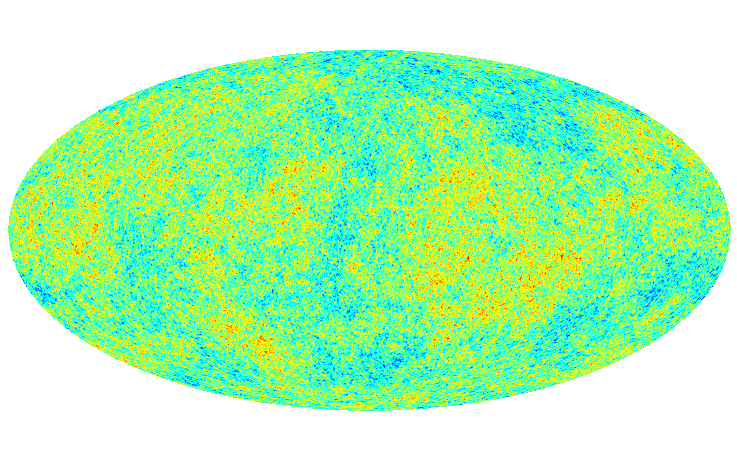400,000 years after the Big Bang
Around 400,000 years after the Big Bang, the Universe had cooled to around 3000 Kelvin. It was then cool enough for atoms to form without being ripped apart by the intense radiation. The atoms were formed by electrons and protons combining, and once this had happened there was nothing left to get in the way of the light. The Universe became transparent.

The light in the Universe was then free the travel through space, with nothing much getting in the way of most of it. We see this light today as the Cosmic Microwave Background, or CMB for short. Over the intervening billions of years, the Universe has expanded, and this has cause the wavelength of all the light in it to get stretched out. We see the Cosmic Microwave Background at microwave wavelengths. The tiny fluctations remaining after inflation are seen as regions with slightly higher and lower temperatures. The image on the right shows a simulation of the CMB as Planck will see it, with hot areas shown red and cold areas shown blue. Most of the obvious blobs are about the same size in the image. This characteristic scale tells us a lot about what the Universe is made of and the initial conditions in which it formed.
We also call the CMB the “Last Scattering Surface”, because it is the last time that most of the light making it up interacted with, or scattered off, the matter in the Universe.
The Universe, instead of being made of a sea of ionised gas, was now made of a sea of neutral gas – mainly hydrogen but some helium as well.
| < First 3 minutes | The CMB | Dark Ages > |